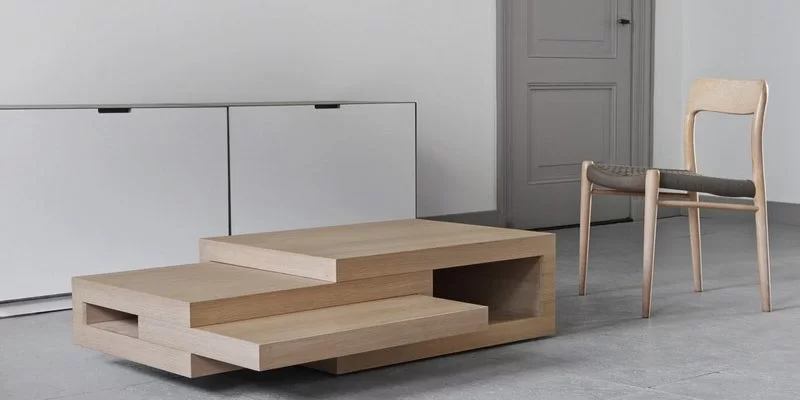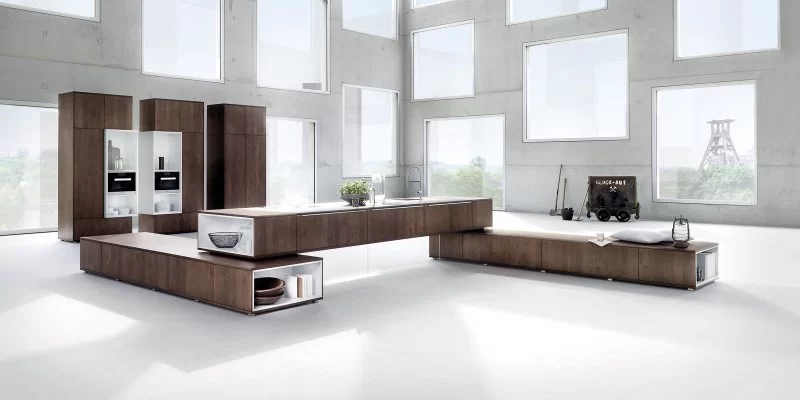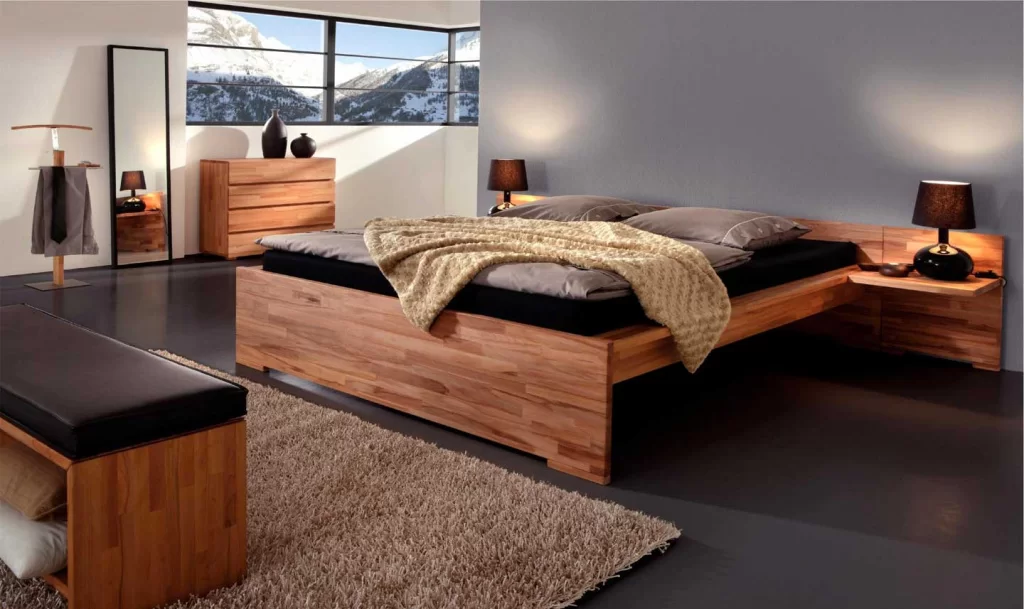
Compare veneer and solid wood | Determine the best material
Natural wood products are highly valued among consumers. Originally made doors or furniture, for example, can become not only a functional, but also an aesthetic addition to any interior. One of the most popular «representatives» of the woodworking industry are veneer and solid wood. What is the difference between them and what is the feature of each material? Our experts know the answers to all questions.
Luxurious durable array: features, benefits

Solid wood is a completely natural material, represented exclusively by wood. In its raw form, it often looks like bars, boards, wood sheets, which are used as the basis for creating furniture. The processing technique can be different, but one thing remains the same — for this, whole pieces of wood are always used and never — waste from the woodworking industry.
The material in question is environmentally friendly, high quality and price. But it is considered an elite product not because of the high price, but because of its noble appearance and incredible durability.
The tree array is of two types:
-
Solid — the more ideal the wood surface, the more valuable such material will be. Accordingly, the absence of knots, chips and other defects in the texture of the wood array significantly increases its value. Pure pieces of wood are generally considered to be of higher quality, and they are usually solid. Furniture made from a single piece of wood is prestigious, has an excellent appearance and is expensive. When forming the price, not only the cost of the expended material is taken into account, but also the work itself. After all, such a product is created manually: in the production of furniture from solid wood, only saws, grinders and pneumatic pistols are used as tools.
-
Glued is a less expensive alternative to the first option. Often, when sawing trees, there are many pieces that are unsuitable for the manufacture of boards or solid timber, but it is also impractical to use such “tasty” raw materials for sawdust. It is these bars that are used to create glued wood. It consists of several layers (lamellae) interconnected by a special composition. At the same time, the lamellas are superimposed on each other so that the alternation of fibers «along and across» is obtained.
It is worth immediately clarifying that high-quality solid wood furniture made by a master has no price limit. You can, of course, object, citing an inexpensive array of pine as an example. But it is often made of lamellas and will last at least 5 times less than the solid version.
The main advantages of the wood array:
-
Durability — many people mistakenly consider furniture made of natural solid wood to be short-lived. This is so only in the case when the product was created without observing the drying technology (which implies drying for 1 year and 1 month). A high-quality piece of furniture will last about 20 years.
-
Environmental friendliness — the solid wood is 100% environmentally friendly. The exception is products created in workshops where unnatural oil is used.
-
Sophisticated appearance — an incredibly stylish look emphasizes the status of the owner of solid wood products. None of its imitations can achieve a similar effect.
-
Aesthetic sensations — one cannot fail to note the unique sensations that arise when contemplating and touching products made from solid pieces of wood. In addition, the unique smell of wood has an incredibly calming effect.
-
Uniqueness — since the products are made only individually, you can create any product you like: wood craftsmen are unlimited in their capabilities.
Among the disadvantages of solid wood products, only two can be noted: the high price and the need for careful maintenance.
Practical veneer: features, benefits

For those who are satisfied with the visual identity of wood, practical and elegant veneer will be to their taste. This is the golden mean between natural and synthetic wood materials. Veneer is created by separating thin layers from the wood surface. As a rule, one of three technologies is used for this: peeling, sawing or planing. The material in question is in most cases used as a finishing coating for walls, doors and furniture.
The main advantages of veneer:
-
Affordable price — products, in the production of which veneer was used, are distinguished by democratic cost. Such products are, as a rule, a third cheaper than analogues from the array.
-
Stylish appearance — veneer allows you to achieve a very effective appearance. At the same time, products covered with veneer are practically indistinguishable (either visually or tactilely) from products made from solid wood.
-
Ease of care — veneer furniture does not require delicate handling, and when using a special treatment it becomes «insensitive» to external influences.
-
A variety of patterns — when ordering veneer products, you can easily choose a suitable texture, pattern, its direction, etc. With solid pieces of wood, by the way, everything is more difficult here, because it is impossible to pick up two identical patterns.
Despite all its attractiveness, veneer has a number of disadvantages:
-
Non-environmental — veneer is a layer no more than 0.5 cm thick. Everything else is a «symbiosis» of wood chips, formaldehyde, glue, resins, paint, etc. And this fact will not change at an affordable price.
-
Low quality (with broken technology) — if veneer products are made without following the technology, the product will fail very quickly: the veneer will simply peel off. By the way, if you compare the price of an array and high-quality veneer, the difference will not be so great.
ON A NOTE. There is one more nuance that not everyone will consider a disadvantage, but, nevertheless: the veneer does not have the charm of an array and does not give aesthetic pleasure when touched.
Comparative characteristics
Having examined in detail both products of the woodworking industry, certain conclusions can be drawn. Our experts have compiled a detailed comparison of the materials described above. Here’s what they got.
|
criterion
|
|
|
|
|
It is a layer of wood about 0.3-0.5 cm thick
|
It is a solid piece of wood
|
|
|
Contains resins, synthetic components (glue, paint), etc.
|
100% natural
|
|
|
With proper care, it will last about 10 years
|
With proper care, it will last 15-20 years
|
|
|
Resistant to fluctuations in temperature and humidity
|
Ability to withstand significant loads, immunity to ultraviolet radiation
|
|
|
Medium to High
|
High
|

Добавить комментарий
Для отправки комментария вам необходимо авторизоваться.